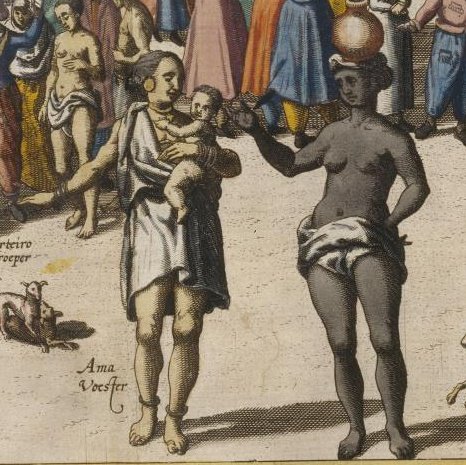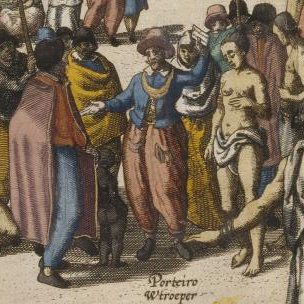Have you ever wondered why the topic of dinosaurs in India seems absent from common knowledge?
In truth, dinosaurs thrived in the Indian peninsula 250 to 65 million years ago, and they were unlike any others seen globally.
Sadly, many people, including myself, aren't aware of this, which is why I'm sharing this #thread.
1️⃣
In truth, dinosaurs thrived in the Indian peninsula 250 to 65 million years ago, and they were unlike any others seen globally.
Sadly, many people, including myself, aren't aware of this, which is why I'm sharing this #thread.
1️⃣

The very first dinosaur discovery, Titanosaurus Indicus, unearthed from the Deccan Traps in Jabalpur, dates back to 1832 and is 70 million years old. After vanishing in 1877, it made a dramatic comeback, resurfacing in the Shiwalik Gallery of the Indian Museum.
2️⃣
2️⃣

Titanosaurus blanfordi was 2nd dino remain found in Pisdura, Maharashtra.
Rajasaurus - Regal Lizard remains were found in Kheda, Gujarat and Jabalpur MP. This 30 feet giant roamed in India around 70-65 Mya
3️⃣
Rajasaurus - Regal Lizard remains were found in Kheda, Gujarat and Jabalpur MP. This 30 feet giant roamed in India around 70-65 Mya
3️⃣

Rajasaurus - Regal Lizard remains were found in Kheda, Gujarat and Jabalpur MP. This 30 feet giant roamed in India around 70-65 Mya
4️⃣
4️⃣

Rajasaurus - the majestic Regal Lizard, whose formidable remains were unearthed in the regions of Kheda, Gujarat, and Jabalpur, Madhya Pradesh, India. This awe-inspiring 30-foot predator roamed the ancient Indian subcontinent approximately 70-65 million years ago, during the Late Cretaceous period, a time when dinosaurs dominated the Earth.
5️⃣
5️⃣

Jainosaurus is a remarkable example of a primitive titanosaur from the Late Cretaceous period. This colossal dinosaur reached an impressive length of 70.5 feet and weighed around three tonnes. It was named in honor of Sohan Lal Jain, a pioneering Indian paleontologist who contributed significantly to our understanding of prehistoric life. Fascinatingly, a bone of the Jainosaurus is preserved in the Nasik Museum, offering a tangible connection to this majestic creature from a bygone era.
6️⃣

6️⃣


Isisaurus, a plant-eating dinosaur belonging to the Sauropod lineage, was named in honor of the Indian Statistical Institute. Stretching up to 69 feet, it shares a connection with Titanosaurus and sported a notably long and robust neck.
7️⃣
7️⃣

Rahiolisaurus Is a genus of Abelisaurid dinosaur from the late cretaceous period of India. Greek for Rahioli Lizard, it was discovered near Rahioli village. It also roamed during the late cretaceous period, about 70-65 million years ago and was discovered in 2010
8️⃣
8️⃣

Bruhathkayosaurus a massive sauropod dinosaur from the early Maastrichtian of India and is the second largest dinosaur found to date, with a length of 45 meters. Found in Kalimedu, TN was lost soon after discovering due to monsoon
9️⃣
9️⃣

Kotasaurus Discovered from the Kota formation in Andhra Pradesh, Kotasaurus is Greek for Kota Lizard. It walked in India about 180-175 million years ago. it grew up to 30 feet long and weighed up to 10 tonnes. pp
1️⃣0️⃣
1️⃣0️⃣

Fossil bone fragments of sauropod dinosaurs as old as nearly 100 million years discovered from an area around West Khasi Hills district in Meghalaya.
1️⃣1️⃣
1️⃣1️⃣
https://twitter.com/64098246/status/1565165912717529088
A stunning fossil of an Ichthyosaur has been unearthed in Gujarat, revealing a prehistoric giant akin to 6 SUVs parked end-to-end. This marine reptile, which once glided through ancient seas, was comparable in size to those that thrived in the frigid realms of the North Pole, offering a glimpse into a bygone era.
1️⃣2️⃣

1️⃣2️⃣


Vasuki, the colossal reptile rocking the science world!
At over 40 feet long and 50 million years old, Vasuki rewrites prehistoric history. With armor-like scales, this giant predator is reshaping our understanding of ancient ecosystems.
Unearthed in Gujarat, India, Vasuki Indicus challenges the legendary Titanoboa. Fossils reveal a snake that once roamed India and ventured to Africa, making waves in the Eocene era. Excavated from Kutch, Gujarat, these findings are rewriting the reptile rulebook.
#Archaeology
1️⃣3️⃣
At over 40 feet long and 50 million years old, Vasuki rewrites prehistoric history. With armor-like scales, this giant predator is reshaping our understanding of ancient ecosystems.
Unearthed in Gujarat, India, Vasuki Indicus challenges the legendary Titanoboa. Fossils reveal a snake that once roamed India and ventured to Africa, making waves in the Eocene era. Excavated from Kutch, Gujarat, these findings are rewriting the reptile rulebook.
#Archaeology
1️⃣3️⃣
135-million year old dinosaur fossil in Kutch, Gujarat. Pieces of bones of the hip and two legs that have been found are around two feet long, suggesting that the dinosaur was at least 10 to 15 metre in length. Fig representative
1️⃣4️⃣
1️⃣4️⃣

Lamplughsaura is a genus of sauropodomorph dinosaur from the Sinemurian-age (Early Jurassic) Dharmaram Formation in India, dating between 196 and 190 million years ago. The genus includes only one species, Lamplughsaura dharmaramensis. This species is known from several partial skeletons of a large quadrupedal animal measuring up to 10 meters (33 feet) in length. It was either a basal sauropod or, less likely, a more basal sauropodomorph.
The genus was named in honor of Pamela Lamplugh Robinson, the founder of the Geological Studies Unit at the Indian Statistical Institute in Kolkata.
1️⃣5️⃣
The genus was named in honor of Pamela Lamplugh Robinson, the founder of the Geological Studies Unit at the Indian Statistical Institute in Kolkata.
1️⃣5️⃣

A distinct collection of fossilized dinosaur eggs, featuring an unusual egg-within-an-egg configuration, has been discovered at the Dinosaur Fossil National Park in Madhya Pradesh's Dhar District.
1️⃣6️⃣
1️⃣6️⃣

Src jstor.org/stable/2411066… bbc.com/future/article……. indiatimes.com/news/india/do-…… nhm.ac.uk/discover/dino-…… thehindu.com/sci-tech/scien…… indiatoday.in/india/story/10…… indiatoday.in/education-toda……
1️⃣7️⃣
1️⃣7️⃣
• • •
Missing some Tweet in this thread? You can try to
force a refresh























